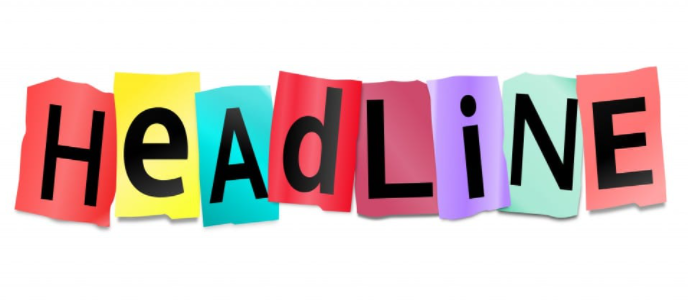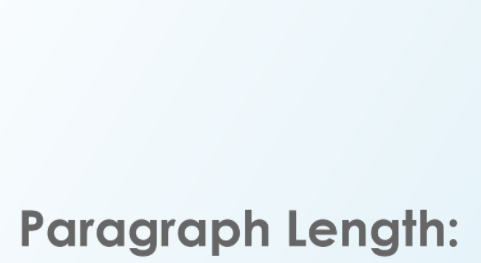The Ideal Length of Everything You Write Online

Lengthy blog posts are great for those looking to dive deep into a topic, but sometimes you just need something shorter and sweeter. So how do you know when to go long and when to go short? Here’s a handy guide on the ideal length of everything you write online.
The Ideal Length of a Tweet

Twitter has a character limit of 280 characters. This is not a lot of space, so it’s important to make every character count. But the ideal length is 100. You can count that words easily with Character Counter.
Here are some tips for writing tweets that are both effective and engaging:
- Keep your tweets short and sweet. Use as few words as possible to get your point across.
- Make sure your tweets are easy to read. Use clear, concise language and avoid complex terms or abbreviations.
- Use images and videos whenever possible. They can help you communicate your message more effectively than text alone.
- Be interesting! Tweet about things that people will want to read or share with their followers.
The Ideal Length of a Facebook Post

A recent study by BuzzSumo found that posts with less than 100 characters receive 66 percent more engagement than those with more than 500 characters. That’s because when people see a long post, they often don’t bother reading it. The ideal length of a Facebook post is 80-120 characters.
To make sure your posts have the right character Length, use a Character Counter tool. These tools will help you keep your posts within the optimal character range. As addition you will also know how many character with and without spaces, words, sentences and paragraphs you have.
The Ideal Length of a Google+ Headline

You only have a few characters to work with when crafting a headline for Google+, so it’s important to make each one count. According to Co Schedule, the perfect length for a G+ headline is 60-70 characters.
Anything longer than that and you run the risk of truncation, which can be frustrating for your readers. On the other hand, if you keep your headlines too short, they may not stand out from the rest of the pack.
So what’s the sweet spot? experimentation will tell you best, but in general aim for around 65 characters to ensure both readability and attention-grabbing potential. Word Counter and Character Counter can help you stay within these guidelines without sacrificing impact or clarity.
The Ideal Length of a Headline

There’s no one answer to this question – the ideal length of a headline depends on what you’re trying to achieve with it. However, there are some general rules of thumb that can help you create headlines that are both effective and eye-catching.
First, keep your headlines short and sweet. Studies have shown that people are more likely to read a headline if it’s less than 6 words long. Additionally, using keywords in your headlines can help you rank higher in search engine results pages (SERPs).
Finally, remember to use a character counter to make sure your headlines don’t exceed the recommended limit of 55-60 characters. This will ensure that they’ll be displayed in their entirety on SERPs. By keeping these things in mind, you can create headlines that grab attention and get results.
The Ideal Length of a Blog Post

It’s not the length of a blog post that matters; it’s how you write. Word count is only used by some search engines to determine the relevancy of your content and whether you have everything covered on a topic (which, I guess, does matter in terms of your rankings).
It surprises me when marketers suggest 500+ word counts are necessary to rank highly on Google: if that were true, then most short story authors would never get read! There are exceptions, of course, but as a general rule, shorter content is preferred.
Aim for around 300-400 words if you want to rank in the top spots on Google and keep readers engaged. Anything over 500 words can often be seen as padding (unless you’re an expert on the topic).
The Ideal Width of a Paragraph

In long-form content, you may encounter paragraphs that seem to extend over several lines. This can be hard to read and comprehend if the text has a lot of information in it. The average paragraph width should be between 60 and 75 characters per line, which works out as about six or seven words.
Word Counter has an algorithm built into Word Counter’s. Word Count tool which determines where the optimal point is for breaking up your sentences so they are easier to follow when reading them online.
The Ideal Length of an Email Subject Line

According to research, the ideal length for an email subject line is 50-60 characters. Anything shorter than that and your recipients may not see the whole message in their inbox. Conversely, anything longer than that and it might get cut off or be ignored altogether. So when crafting your next email campaign, be sure to keep your subject lines within this sweet spot!
Length of a Presentation

There is no one-size-fits-all answer to this question, as the ideal length of a presentation will vary depending on its content and purpose. However, there are some general guidelines that can help you determine the right length for your presentation.
In most cases, it is best to keep presentations short and concise. The average person has a limited attention span, so lengthy presentations can quickly lose their audience’s interest. In order to ensure that your message is heard, aim to keep your presentation under 20 minutes long.
If you have more information to share, consider breaking up your presentation into several shorter segments rather than trying to cram everything into one long talk. This will also help prevent fatigue among your listeners.
Conclusion
So, what’s the ideal length for everything you write online? The answer is it depends. But hopefully this article has given you a few good rules of thumb to follow as you craft your next blog post or social media update. Keep in touch for more useful information like this and don’t forget to subscribe to our email list so you can be the first to know when new content is published on our site.
You May Also Like to Read: How to Write a Newspaper Article




